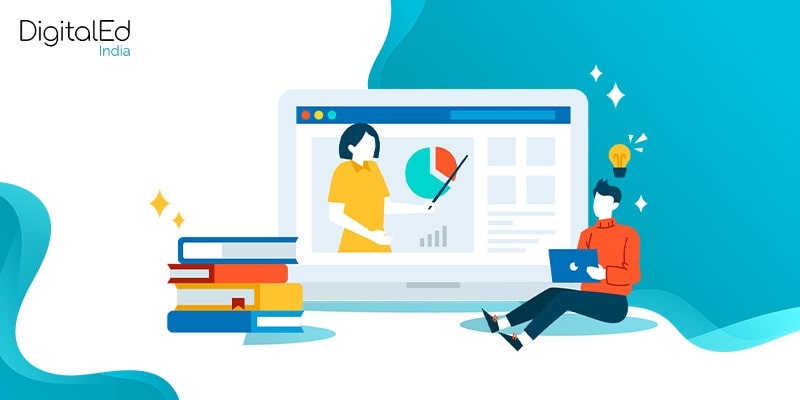What is Blended Learning? 7 Reasons why it is becoming a Trend
What is Blended Learning?
Blended learning is a method of instruction that combines online and traditional education. This method has many benefits and is sometimes a part of a larger reform initiative. For example, it encourages student interaction and collaboration and can help develop social skills. However, it can be challenging to implement successfully, as there are a variety of components that need to be considered. In addition, it requires instructional design support, which will vary depending on the students and their learning styles.

A blended learning semester begins with a significant amount of time in the classroom and gradually increases online work and independent study. Using composite learning resources in a traditional classroom requires teachers to modify the syllabus to accommodate these new techniques. But the underlying concept is similar to traditional teaching, which emphasizes the importance of a solid syllabus. It must be designed to ensure student success, but it should not be too complicated. Students must work together to develop the skills and knowledge needed to perform the tasks in such a situation.
There are many ways to incorporate online and offline materials in a blended learning environment. A blended learning class can be helpful for students with varying learning styles. However, some students may find that self-directed learning is not the best option for their needs. If they’re having trouble with math or reading, they should seek help from a trained professional.
Blended Learning in School Environment
The most common model for using blended learning in a school environment is the rotation model. This is a well-known method for small-group instruction in elementary schools. It is also the most widely used literacy framework in the K-5 setting. While rotation models have been around for years, they aren’t as prevalent in middle and high-school classrooms.
Effective blended learning models allow students to engage in online and offline learning. These activities help students gain independence and participate in meaningful literacy tasks.
Blended Learning in Corporate Environment
The benefits of blended learning in a corporate setting are many. Employees can learn at their own pace and still get face-to-face training. This allows them to take the time they need and complete their work at their own pace.
Using a blend of online and face-to-face training help employees learn more effectively. Some people learn faster than others, and blended learning offers a more flexible option. By utilizing the best of both worlds, companies can create better-trained, more empowered, and motivated employees.
7 Reasons, Why it is Becoming a Trend!
More Effective than Traditional Classrooms
As more students seek flexibility in their learning environment, more professors use blended learning to deliver courses. As a result, the number of student-teacher interactions has increased, allowing faculty and administrators to tailor instruction to their student’s specific needs. Using a combination of traditional teaching methods and digital tools allows for more effective assessment and improvement.
Future Learning Adaptation
There are a few additional benefits, and blended learning may be the best option for you and your students. For example, this approach allows institutions to better prepare for the COVID-19 outbreak. Moreover, using online technology during a crisis allows faculty to quickly deploy digital engagement tools to students. Besides, students are better prepared for their future careers, thanks to this new learning approach. Businesses also want employees capable of using online resources and working outside the classroom.
Flexible Knowledge Delivery
Blended learning enables instructors and students to meet at a time and place that is convenient for them. Instructors can easily collaborate with each other and share their knowledge and expertise. Additionally, blended learning makes it easier for subject matter experts from any part of the world to participate in a course. This increases student engagement and adds a whole new revenue stream.
Learning Attitude Development
Changes in student attitudes are another advantage. Unlike in the past, students today are more likely to be more engaged than ever before, which leads to improved learning outcomes. The flipped classroom approach, or “flipped” learning, uses a hybrid of traditional and digital materials to facilitate students’ education.
Flexible & Collaborative Learning
In contrast to the traditional classroom model, blended learning encourages collaboration. A blending of traditional and digital methods can help students progress towards a higher level of understanding.
One reason to incorporate blended learning is that it gives instructors more flexibility. This is because the process allows instructors to adjust their lessons to suit the needs of their students. This means that they can focus more on teaching and developing their students. In addition, online course creators can customize the content for a blended learning course.
Offering different education formats will benefit both the students and the faculty. Unlike traditional classrooms, online students can take advantage of the flexibility provided with blended learning. Moreover, it can help encourage media literacy in young people.
Customized Learning
A blended learning model will allow teachers to tailor content to a student’s unique learning style. It can save money. It can also save time. This type of approach will allow for multiple delivery modes. While a traditional classroom can be efficient, it may not be appropriate for everyone. It can be a barrier to accessing the necessary material for further learning. Fortunately, modern technologies have created the opportunity to create the best possible hybrid-learning experience.
Efficient & Cost-Effective
Unlike traditional classrooms, blended learning will allow students to learn more effectively and efficiently. It will increase the student’s autonomy and responsibility while providing a more personalized experience. Moreover, it will help in building their self-advocacy and promote ownership. This will benefit the student in the long run. It will be easier to adapt the program to different learning styles. This way, blended learning will be an efficient and cost-effective solution for the classroom and online environments.